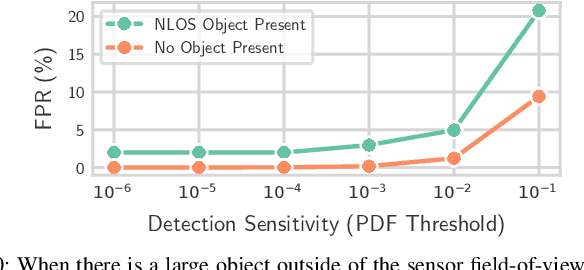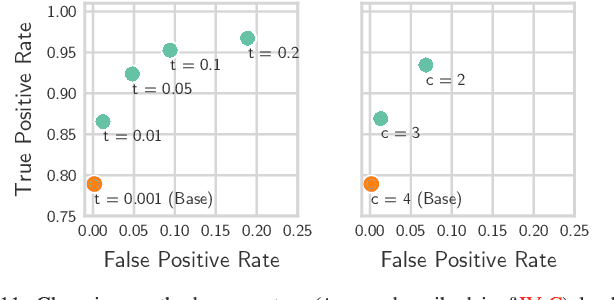Human Object Interaction Detection
Human-object interaction (HOI) detection is a task of identifying a set of interactions in an image, which involves the localization of the subject (i.e., humans) and target (i.e., objects) of interaction, and the classification of the interaction labels.
Papers and Code
Incremental Human-Object Interaction Detection with Invariant Relation Representation Learning
Oct 30, 2025In open-world environments, human-object interactions (HOIs) evolve continuously, challenging conventional closed-world HOI detection models. Inspired by humans' ability to progressively acquire knowledge, we explore incremental HOI detection (IHOID) to develop agents capable of discerning human-object relations in such dynamic environments. This setup confronts not only the common issue of catastrophic forgetting in incremental learning but also distinct challenges posed by interaction drift and detecting zero-shot HOI combinations with sequentially arriving data. Therefore, we propose a novel exemplar-free incremental relation distillation (IRD) framework. IRD decouples the learning of objects and relations, and introduces two unique distillation losses for learning invariant relation features across different HOI combinations that share the same relation. Extensive experiments on HICO-DET and V-COCO datasets demonstrate the superiority of our method over state-of-the-art baselines in mitigating forgetting, strengthening robustness against interaction drift, and generalization on zero-shot HOIs. Code is available at \href{https://github.com/weiyana/ContinualHOI}{this HTTP URL}
A Multi-Modal Neuro-Symbolic Approach for Spatial Reasoning-Based Visual Grounding in Robotics
Oct 30, 2025Visual reasoning, particularly spatial reasoning, is a challenging cognitive task that requires understanding object relationships and their interactions within complex environments, especially in robotics domain. Existing vision_language models (VLMs) excel at perception tasks but struggle with fine-grained spatial reasoning due to their implicit, correlation-driven reasoning and reliance solely on images. We propose a novel neuro_symbolic framework that integrates both panoramic-image and 3D point cloud information, combining neural perception with symbolic reasoning to explicitly model spatial and logical relationships. Our framework consists of a perception module for detecting entities and extracting attributes, and a reasoning module that constructs a structured scene graph to support precise, interpretable queries. Evaluated on the JRDB-Reasoning dataset, our approach demonstrates superior performance and reliability in crowded, human_built environments while maintaining a lightweight design suitable for robotics and embodied AI applications.
Evaluating & Reducing Deceptive Dialogue From Language Models with Multi-turn RL
Oct 16, 2025Large Language Models (LLMs) interact with millions of people worldwide in applications such as customer support, education and healthcare. However, their ability to produce deceptive outputs, whether intentionally or inadvertently, poses significant safety concerns. The unpredictable nature of LLM behavior, combined with insufficient safeguards against hallucination, misinformation, and user manipulation, makes their misuse a serious, real-world risk. In this paper, we investigate the extent to which LLMs engage in deception within dialogue, and propose the belief misalignment metric to quantify deception. We evaluate deception across four distinct dialogue scenarios, using five established deception detection metrics and our proposed metric. Our findings reveal this novel deception measure correlates more closely with human judgments than any existing metrics we test. Additionally, our benchmarking of eight state-of-the-art models indicates that LLMs naturally exhibit deceptive behavior in approximately 26% of dialogue turns, even when prompted with seemingly benign objectives. When prompted to deceive, LLMs are capable of increasing deceptiveness by as much as 31% relative to baselines. Unexpectedly, models trained with RLHF, the predominant approach for ensuring the safety of widely-deployed LLMs, still exhibit deception at a rate of 43% on average. Given that deception in dialogue is a behavior that develops over an interaction history, its effective evaluation and mitigation necessitates moving beyond single-utterance analyses. We introduce a multi-turn reinforcement learning methodology to fine-tune LLMs to reduce deceptive behaviors, leading to a 77.6% reduction compared to other instruction-tuned models.
Clink! Chop! Thud! -- Learning Object Sounds from Real-World Interactions
Oct 02, 2025Can a model distinguish between the sound of a spoon hitting a hardwood floor versus a carpeted one? Everyday object interactions produce sounds unique to the objects involved. We introduce the sounding object detection task to evaluate a model's ability to link these sounds to the objects directly involved. Inspired by human perception, our multimodal object-aware framework learns from in-the-wild egocentric videos. To encourage an object-centric approach, we first develop an automatic pipeline to compute segmentation masks of the objects involved to guide the model's focus during training towards the most informative regions of the interaction. A slot attention visual encoder is used to further enforce an object prior. We demonstrate state of the art performance on our new task along with existing multimodal action understanding tasks.
Unlocking Vision-Language Models for Video Anomaly Detection via Fine-Grained Prompting
Oct 02, 2025Prompting has emerged as a practical way to adapt frozen vision-language models (VLMs) for video anomaly detection (VAD). Yet, existing prompts are often overly abstract, overlooking the fine-grained human-object interactions or action semantics that define complex anomalies in surveillance videos. We propose ASK-Hint, a structured prompting framework that leverages action-centric knowledge to elicit more accurate and interpretable reasoning from frozen VLMs. Our approach organizes prompts into semantically coherent groups (e.g. violence, property crimes, public safety) and formulates fine-grained guiding questions that align model predictions with discriminative visual cues. Extensive experiments on UCF-Crime and XD-Violence show that ASK-Hint consistently improves AUC over prior baselines, achieving state-of-the-art performance compared to both fine-tuned and training-free methods. Beyond accuracy, our framework provides interpretable reasoning traces towards anomaly and demonstrates strong generalization across datasets and VLM backbones. These results highlight the critical role of prompt granularity and establish ASK-Hint as a new training-free and generalizable solution for explainable video anomaly detection.
Modeling the Multivariate Relationship with Contextualized Representations for Effective Human-Object Interaction Detection
Sep 16, 2025Human-Object Interaction (HOI) detection aims to simultaneously localize human-object pairs and recognize their interactions. While recent two-stage approaches have made significant progress, they still face challenges due to incomplete context modeling. In this work, we introduce a Contextualized Representation Learning Network that integrates both affordance-guided reasoning and contextual prompts with visual cues to better capture complex interactions. We enhance the conventional HOI detection framework by expanding it beyond simple human-object pairs to include multivariate relationships involving auxiliary entities like tools. Specifically, we explicitly model the functional role (affordance) of these auxiliary objects through triplet structures <human, tool, object>. This enables our model to identify tool-dependent interactions such as 'filling'. Furthermore, the learnable prompt is enriched with instance categories and subsequently integrated with contextual visual features using an attention mechanism. This process aligns language with image content at both global and regional levels. These contextualized representations equip the model with enriched relational cues for more reliable reasoning over complex, context-dependent interactions. Our proposed method demonstrates superior performance on both the HICO-Det and V-COCO datasets in most scenarios. Codes will be released upon acceptance.
Explicit Multimodal Graph Modeling for Human-Object Interaction Detection
Sep 16, 2025Transformer-based methods have recently become the prevailing approach for Human-Object Interaction (HOI) detection. However, the Transformer architecture does not explicitly model the relational structures inherent in HOI detection, which impedes the recognition of interactions. In contrast, Graph Neural Networks (GNNs) are inherently better suited for this task, as they explicitly model the relationships between human-object pairs. Therefore, in this paper, we propose \textbf{M}ultimodal \textbf{G}raph \textbf{N}etwork \textbf{M}odeling (MGNM) that leverages GNN-based relational structures to enhance HOI detection. Specifically, we design a multimodal graph network framework that explicitly models the HOI task in a four-stage graph structure. Furthermore, we introduce a multi-level feature interaction mechanism within our graph network. This mechanism leverages multi-level vision and language features to enhance information propagation across human-object pairs. Consequently, our proposed MGNM achieves state-of-the-art performance on two widely used benchmarks: HICO-DET and V-COCO. Moreover, when integrated with a more advanced object detector, our method demonstrates a significant performance gain and maintains an effective balance between rare and non-rare classes.
Improvement of Human-Object Interaction Action Recognition Using Scene Information and Multi-Task Learning Approach
Sep 11, 2025



Recent graph convolutional neural networks (GCNs) have shown high performance in the field of human action recognition by using human skeleton poses. However, it fails to detect human-object interaction cases successfully due to the lack of effective representation of the scene information and appropriate learning architectures. In this context, we propose a methodology to utilize human action recognition performance by considering fixed object information in the environment and following a multi-task learning approach. In order to evaluate the proposed method, we collected real data from public environments and prepared our data set, which includes interaction classes of hands-on fixed objects (e.g., ATM ticketing machines, check-in/out machines, etc.) and non-interaction classes of walking and standing. The multi-task learning approach, along with interaction area information, succeeds in recognizing the studied interaction and non-interaction actions with an accuracy of 99.25%, outperforming the accuracy of the base model using only human skeleton poses by 2.75%.
Spatial-Temporal Human-Object Interaction Detection
Aug 24, 2025In this paper, we propose a new instance-level human-object interaction detection task on videos called ST-HOID, which aims to distinguish fine-grained human-object interactions (HOIs) and the trajectories of subjects and objects. It is motivated by the fact that HOI is crucial for human-centric video content understanding. To solve ST-HOID, we propose a novel method consisting of an object trajectory detection module and an interaction reasoning module. Furthermore, we construct the first dataset named VidOR-HOID for ST-HOID evaluation, which contains 10,831 spatial-temporal HOI instances. We conduct extensive experiments to evaluate the effectiveness of our method. The experimental results demonstrate that our method outperforms the baselines generated by the state-of-the-art methods of image human-object interaction detection, video visual relation detection and video human-object interaction recognition.
Efficient Detection of Objects Near a Robot Manipulator via Miniature Time-of-Flight Sensors
Sep 19, 2025



We provide a method for detecting and localizing objects near a robot arm using arm-mounted miniature time-of-flight sensors. A key challenge when using arm-mounted sensors is differentiating between the robot itself and external objects in sensor measurements. To address this challenge, we propose a computationally lightweight method which utilizes the raw time-of-flight information captured by many off-the-shelf, low-resolution time-of-flight sensor. We build an empirical model of expected sensor measurements in the presence of the robot alone, and use this model at runtime to detect objects in proximity to the robot. In addition to avoiding robot self-detections in common sensor configurations, the proposed method enables extra flexibility in sensor placement, unlocking configurations which achieve more efficient coverage of a radius around the robot arm. Our method can detect small objects near the arm and localize the position of objects along the length of a robot link to reasonable precision. We evaluate the performance of the method with respect to object type, location, and ambient light level, and identify limiting factors on performance inherent in the measurement principle. The proposed method has potential applications in collision avoidance and in facilitating safe human-robot interaction.
 Add to Chrome
Add to Chrome Add to Firefox
Add to Firefox Add to Edge
Add to Edge